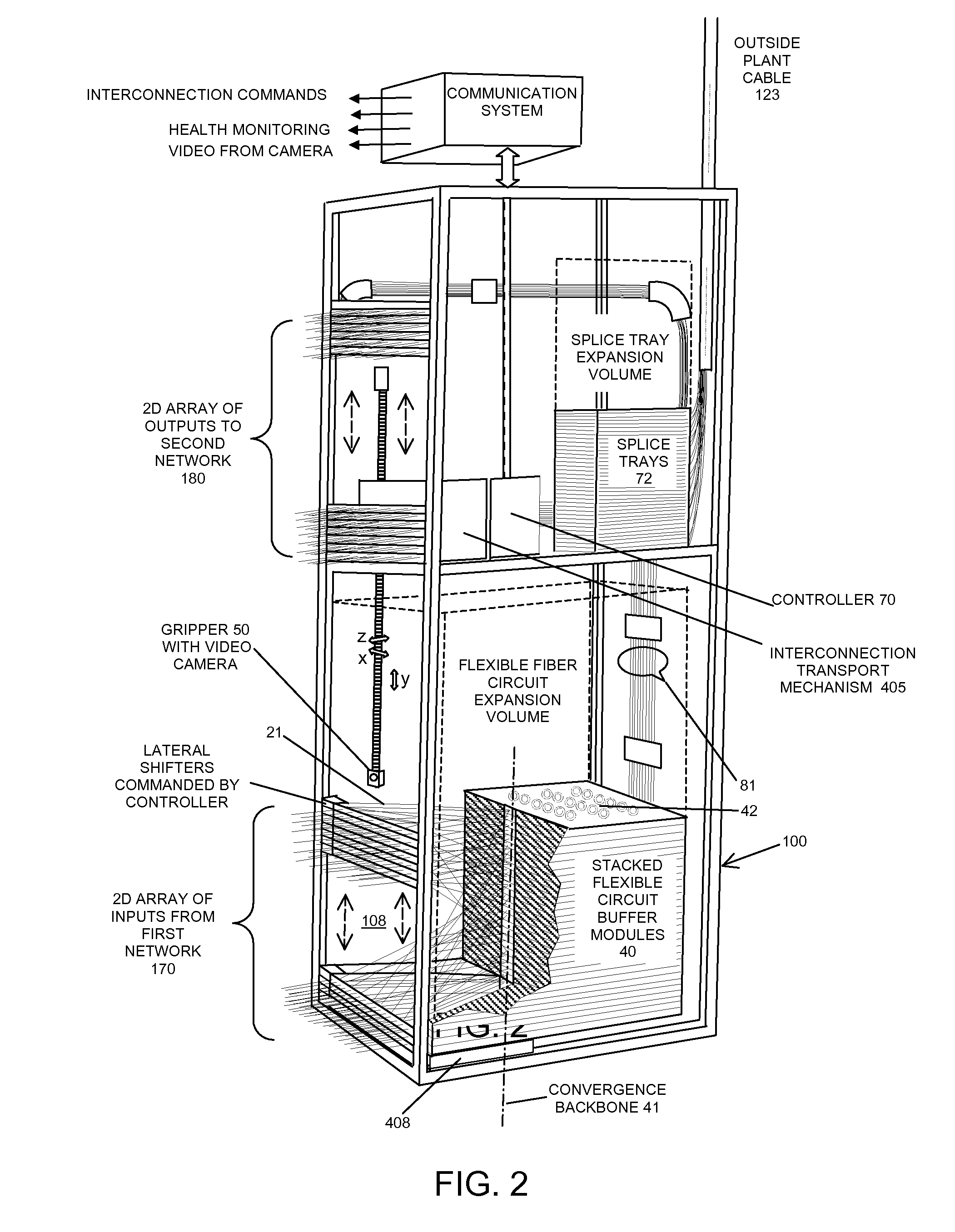Methods to reconfigure all-fiber optical cross-connects
a technology of fiber optic cross-connect and reconfiguration process, which is applied in the direction of optical elements, multiplex communication, instruments, etc., can solve the problems of limited optical performance and scalability, difficult task of allocating, reconfiguring and testing a fiber circuit within the network, and substantial alignment complexity, so as to achieve high reliability operation and the effect of adjusting the reconfiguration process
- Summary
- Abstract
- Description
- Claims
- Application Information
AI Technical Summary
Benefits of technology
Problems solved by technology
Method used
Image
Examples
Embodiment Construction
[0032]In this invention, we disclose methods to reconfigure all-fiber cross-connect switching systems such as those illustrated in block diagram view in FIG. 1 and in partial cutaway, perspective view in FIG. 2. These systems are comprised of 100's to 1000's of fiber interconnects suspended between two planes and intermixing within a common volume. Reconfigurable fiber connections are made internal to this volume, between a two-dimensional array of reconfigurable input terminals 170 and an intermediate, substantially one-dimensional array 41 bounding the interconnect volume 108. The suspended fiber lines 21 therebetween follow substantially straight-line paths and define a three-dimensional arrangement of vectors directed towards the one-dimensional array 41 located at an intermediate plane, beyond which the fiber lines 21 exit contiguously to a modular arrangement of substantially identical, stacked buffer elements 40. Buffer elements provide slight tensioning, parallel to vectors ...
PUM
 Login to View More
Login to View More Abstract
Description
Claims
Application Information
 Login to View More
Login to View More - R&D
- Intellectual Property
- Life Sciences
- Materials
- Tech Scout
- Unparalleled Data Quality
- Higher Quality Content
- 60% Fewer Hallucinations
Browse by: Latest US Patents, China's latest patents, Technical Efficacy Thesaurus, Application Domain, Technology Topic, Popular Technical Reports.
© 2025 PatSnap. All rights reserved.Legal|Privacy policy|Modern Slavery Act Transparency Statement|Sitemap|About US| Contact US: help@patsnap.com



